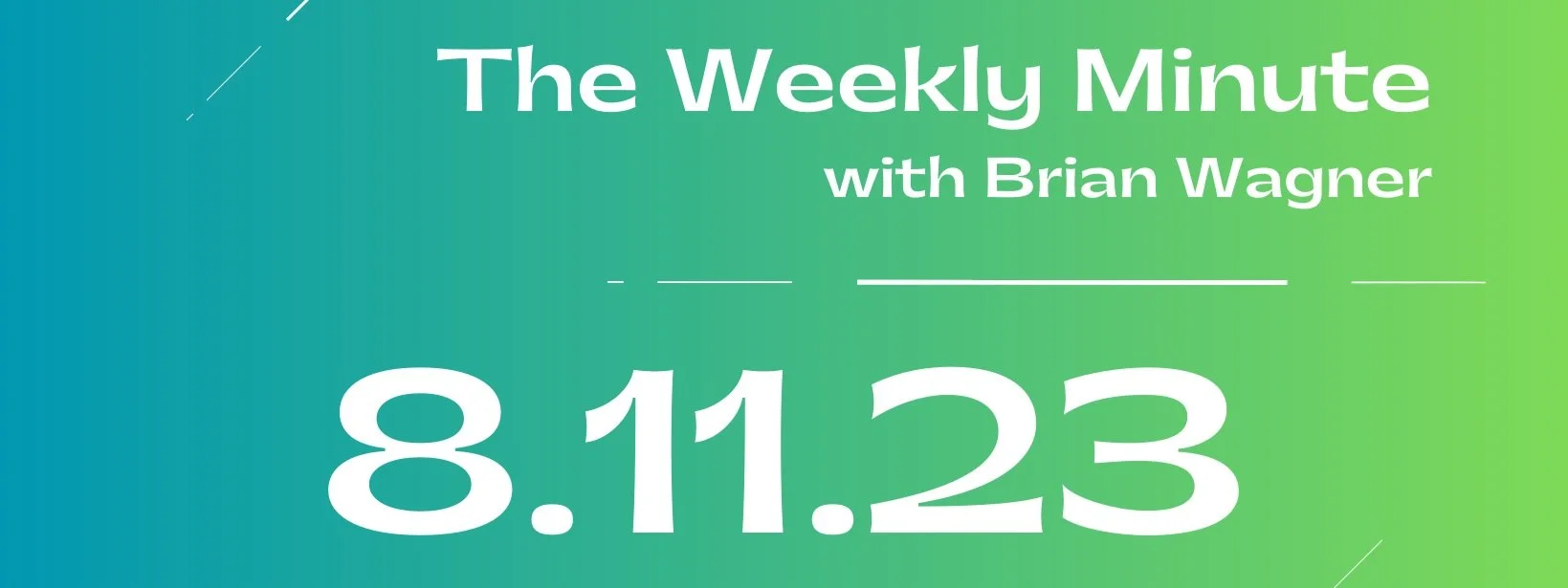Book Report - The Advantage
The Advantage: Why Organizational Health Trumps Everything Else in Business
By: Patrick Lencioni
Intro
So many leaders struggle to embrace organizational health because they quietly believe they are too sophisticated, too busy, or too analytical to bother with it.
It’s as though they’re afraid to slow down and deal with issues that are critical but don’t seem particularly urgent
Organizational Health = is about integrity, but not in the ethical or moral way that integrity is defined. An org has integrity (healthy) when it is whole, consistent, and complete – that is, when its management, ops, strategy and culture fit together and make sense.
Two requirements for success
Smart
Strategy
Marketing
Finance
Technology
Healthy
Minimal Politics
Minimal confusion
High morale
High productivity
Low turnover
Studying spreadsheet and Gantt charts is safe and predictable; we need to do more
The Four Disciplines Model
Discipline 1 - Build a Cohesive Leadership Team
Intro
A working group is like a golf team; they go off and play on their own and then get together. That’s bad. Teamwork is not a virtue. It’s a choice - and a strategic one.
Should be from 3-12 people
This group is collectively responsibility for achieving a common objective for their organization
When it comes to discussion and decision making, there are two critical ways that members of effective teams must communicate:
Advocacy
This is what most people are used to; about stating your case and making your points
Inquiry
This is rarer and more important. This happens when people ask questions to seek clarity about another persons’ statement of advocacy.
When more than 8 people are on a team, members tend to advocate a heck of a lot more than they inquire
If a team shares a common objective, a good portion of their compensation or reward structure, though not necessarily all of it, should be based on the achievement of the common objective
Behavior 1 - Building Trust
As the prayer of St. Francis goes, we must seek to understand more than to be understood
The only way for teams to build real trust is for team members to come clean about who they are, warts and all
The leaders goes fast - The only way for the leader of a team to create a safe environment for his team members to be vulnerable is by stepping up and doing something that feels unsafe and uncomfortable
This is the most important behavior!
Behavior 2 - Mastering Conflict
Rules of engagement - there should be two formal rules in meetings. If people remained silent during discussions, he would interrupt that as a disagreement. People quickly realized that if they didn’t weigh in, a decision could not be mode. Second, at the end of every discussion, the VP would go around the room and ask every member of this team for a formal commitment to the decision
Behavior 3 - Achieving Commitment
Great teams avoid the consensus trap by embracing a concert that Intel calls “disagree and commit” = even when people can’t come to an agreement around an issue they must still leave the room unambiguously committed to a common course of action
At the end fo every meeting, cohesive teams must take a few mins to ensure that everyone sitting at the table is walking away with the same understanding about what has been agreed to and what they are committed to do
Functional teams maintain the discipline to review their commitment and stick around long enough to clarify anything that isn’t crystal clear
Behavior 4 - Embracing Accountability
Peer to peer accountability is the primary and most effective source of accountability on the leadership team of a healthy organization
Behavior 5 - Focusing on Results
One of the greatest challenges to team success is the inattention to results
The only measure of a great team - or a great org - is whether it accomplishes what it sets out to accomplish
The only way for a team to really be a team and to maximize its output is to ensure that everyone is focused on the same priorities - rowing in the same direction, if you will
The only way for a leader to establish this collective mentality on a team is by ensuring that all members place a higher priority on the team they’re a member of than the team they lead in their departments
Discipline 2 - Create Clarity
Alignment remains frustratingly rare
Alignment is about creating so much clarity that there is a as little room as possible for confusion, disorder, and infighting to set in
Six critical questions
Why do we exist?
Successful orgs understand the fundamental reason they were founded and why exist, and they stay true to that reason
Employees in every org, and at every level, need to know that the heart of what they do lies something grand and aspirational
Money is never a purpose, but rather an important indicator of success
An org's reason for existing is not meant to be a differentiator
How do we behave?
If an organization is tolerant of everything, it will stand for nothing
Values are critical because they define a company’s personality
When an org announces that it has nine core values - it makes it impossible to use those values to make decisions, hire employees, or enact policies.
They key to sifting core values is to ask this: Is this trait inherent and natural for us, and has it been apparent in the organization for a long time
THe problem for orgs that choose common words like innovation or quality is that everyone has their own understanding of those terms
What do we do?
The answer lies at the opposite end of the idealism scale from why an org exists and is nothing more than a description of what an org actually does
If an org’s reason for existence answers the question, WHY, then its business definition answers the question, WHAT
THis definition can change over time, but only when the market changes and calls for a meaningful shift in the fundamental activity of the organization
How will we succeed?
An org strategy is nothing more than the collection of intentional decisions a company makes to give itself the best chance to thrive and differentiate from competitors
The best way for an org to make strategy practice is to boil it down to THREE strategic anchors that twill be used to inform every decision the organization makes and provide the filter or lens through which decisions must be evaluated to ensure consistency
Take a reserved-engineering approach – create an exhaustive list of all the decisions and realities that form the context of their current situations
Another outcome of establishing strategic anchors is making it easier to agree on what an org should NOT be doing
Many leadership teams struggle with not wanting to walk away from opportunities. Strategic anchors give them the clarity and courage to overcome these distractions and stay on course
What is most important, right now?
By communicating that the org has 5 or 7 top priorities, leaders put their well-intentioned employees in the inevitable position of getting pulled in different directions
Every org must have ONE single priority at a given period time
Thematic goal
Singulair
Qualitative
Temporary
Shared across the leadership team
“If we accomplish only one thing during the next x months, what it be?
On a cohesive team, leaders are not there simply to represent the department that they lead and manage but rather to solve problems that stand in the way of achieving success for the whole organization
Length of time for a thematic goal - 3-12 months
The purposes of having a thematic goal is not to restrict the organiozaitons’ flexibility but rather to rally its leaders around what they decide they want to achieve
Who must do what?
With a playbook, leaders must:
Keep it short
Keep their playbook with them at all times
More than getting the right answer, it’s often more important to simply have an answer – one that is directionally correct and around which all team members can commit
A plan is better than no plan
Discipline 3 - Over Communicate Clarity
Claim - employees won’t believe what leaders are communicating to them until they’ve heard it seven times
Great leaders see themselves as Chief REminding Officers as much as anything else
Keys to cascading information:
Message consistency from leader to another
Timeliness of delivery
Live, real-time communication
Great example: CEO charing 1-3 page email to all employees every Friday
Discipline 4 - Reinforce Clarity
Every human system - every process that involves people – from hiring and people management to training and compensation, is designed to reinforce the answers to those questions
Orientation - the most memorable time of an employee’s career - and the time with the biggest impact, are his or her first days and weeks on a new job
It often sets the tone for their behavior and attitude during tier entire tenure with the company
What is key is is that’s built around the six questions and that leaders take an active role in its design and delivery
Healthy organizations believe that performance management is almost exclusively about eliminating confusion. They realize that most of their employees want to succeed, and that the best way to allow them to do that is to give them clear direction, regular information about how they’re doing and access to the coaching they need.
The best performance management programs are designed to stimulate the right kind of conversations around the right topics. That’s all
The Centrality of Great Meetings
Why do we hate meetings? Probably because they are usually awful
The human brain isn’t meant to process so many disparate topics in one sitting
The Four Meetings
Admin - Daily Check-in - 5-10 mins
No agenda, just exchange of information
Tactical - Weekly Staff - 45-90 mins
“How are we doing against the things we said are most important?”
Strategic - Ad Hoc Topical - 2-4 hours
Purpose is to dig into the critical issues that can have a long-term impact on an org
Developmental - Quarterly Off-Site - 1-2 Days
A leader’s first priority is to create an environment where others can do these things and that happen if they are not having effective meetings
At the end of every meeting (except daily check-in) item members must stop and clarify what they've agreed to and what they will go back and communicate to their teams
At every step in the process, the leader must be out front, not as cheerleader or a figurehead, but as an active, tenacious driver
Ending Summary
Lencioni argues that while many organizations obsess over strategy and technology, they often overlook the essential factor of organizational health, which can make or break their success.
Organizational health is defined by Lencioni as the ability of a company to function effectively, cohesively, and harmoniously, with minimal politics and confusion.
The book emphasizes the importance of putting people first and fostering a healthy work culture as a strategic priority.
Strategic leaders are encouraged to address dysfunction within their teams openly and proactively to foster a culture of trust and collaboration.
The Advantage is a must-read for strategic leaders seeking to improve their organization's overall health and performance, ultimately achieving long-term success in a rapidly changing business landscape.
Lencioni identifies four key disciplines that strategic leaders should prioritize to build organizational health:
Build a Cohesive Leadership Team: Establish a strong, trusting, and transparent leadership team that sets the tone for the rest of the organization.
Create Clarity: Clearly define and communicate the organization's core values, purpose, and strategic goals to align the entire team towards a common direction.
Over-Communicate: Consistently communicate the company's vision, strategies, and priorities to keep everyone on the same page and prevent misunderstandings.
Reinforce Clarity: Continuously reinforce the company's values, purpose, and priorities through hiring, performance management, and other HR practices.


